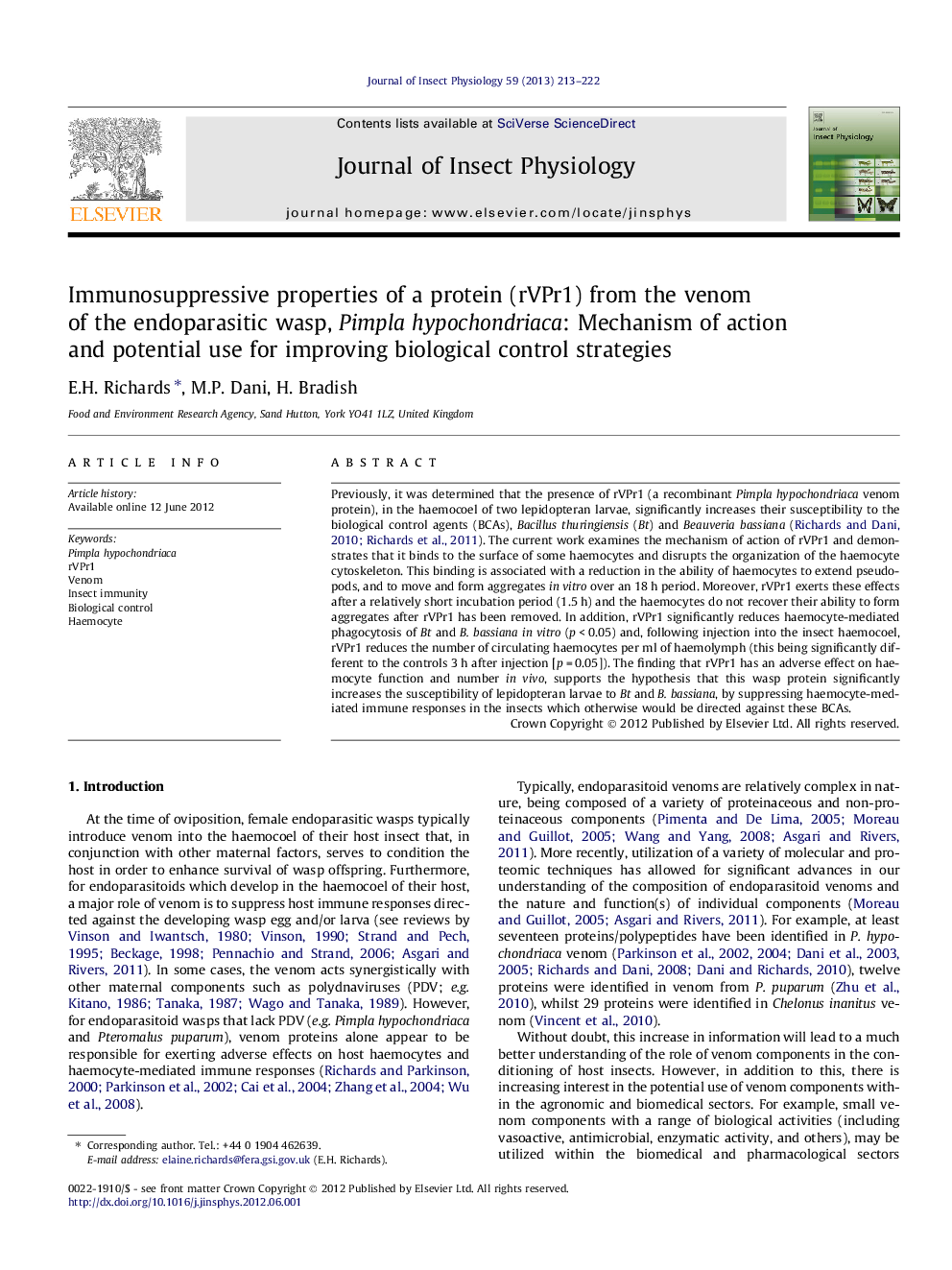| کد مقاله | کد نشریه | سال انتشار | مقاله انگلیسی | نسخه تمام متن |
|---|---|---|---|---|
| 2840557 | 1165331 | 2013 | 10 صفحه PDF | دانلود رایگان |

Previously, it was determined that the presence of rVPr1 (a recombinant Pimpla hypochondriaca venom protein), in the haemocoel of two lepidopteran larvae, significantly increases their susceptibility to the biological control agents (BCAs), Bacillus thuringiensis (Bt) and Beauveria bassiana ( Richards and Dani, 2010 and Richards et al., 2011). The current work examines the mechanism of action of rVPr1 and demonstrates that it binds to the surface of some haemocytes and disrupts the organization of the haemocyte cytoskeleton. This binding is associated with a reduction in the ability of haemocytes to extend pseudopods, and to move and form aggregates in vitro over an 18 h period. Moreover, rVPr1 exerts these effects after a relatively short incubation period (1.5 h) and the haemocytes do not recover their ability to form aggregates after rVPr1 has been removed. In addition, rVPr1 significantly reduces haemocyte-mediated phagocytosis of Bt and B. bassiana in vitro (p < 0.05) and, following injection into the insect haemocoel, rVPr1 reduces the number of circulating haemocytes per ml of haemolymph (this being significantly different to the controls 3 h after injection [p = 0.05]). The finding that rVPr1 has an adverse effect on haemocyte function and number in vivo, supports the hypothesis that this wasp protein significantly increases the susceptibility of lepidopteran larvae to Bt and B. bassiana, by suppressing haemocyte-mediated immune responses in the insects which otherwise would be directed against these BCAs.
Binding of rVPr1 to the surface of haemocytes (1) causes disorganization of the cytoskeleton (2), and inhibits pseudopod formation (2) and cell movement. Also, rVPr1 suppresses phagocytosis (3) and reduces haemocyte number in vivo (4). The ability of rVPr1 to increase the susceptibility of insects to Bt and B. bassiana is associated with suppression of haemocyte mediated immune responses.Figure optionsDownload as PowerPoint slideHighlights
► rVPr1 binds to the surface of haemocytes and disrupts the haemocyte cytoskeleton.
► rVPr1-mediated reductions in haemocyte aggregate formation are not reversible.
► rVPr1 reduces phagocytosis of Bt and B. bassiana (p < 0.05) by haemocytes in vitro.
► rVPr1 reduces haemocyte number in vivo (p = 0.05) 3 h after treatment.
► rVPr1 increases susceptibility of insects to BCAs by suppressing immune responses.
Journal: Journal of Insect Physiology - Volume 59, Issue 2, February 2013, Pages 213–222